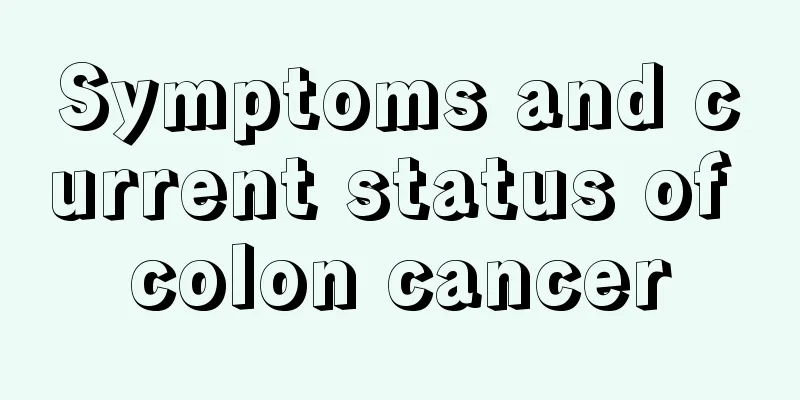There are black threads on the wound after surgery

|
For wounds that have just undergone surgery, you need to consider whether there is infection, redness, swelling, and other signs. In addition to these, you also need to check whether there are any foreign objects left. For example, if the stitches are removed from the wound, are there any thread ends or some black thread ends left? If the thread ends are infected, you should go to the hospital for examination and treatment as soon as possible. This will effectively promote recovery and avoid some complications. First of all, consider whether the wound is infected. The most intuitive way is to see if there are any signs of inflammation such as redness, swelling, heat, and pain. If there are any, then check the wound to see if there are any foreign objects left, such as thread ends from the wound being removed, etc. Suggestions: 1. Take good care of the wound, disinfect it with alcohol or cover it with alcohol cotton balls 2. Disinfect and clean your clothes, including changing bad living habits, such as washing your hands frequently. 3. Pay attention to rest and improve your body's immunity 4. Go to the hospital for examination and targeted anti-inflammatory treatment when necessary The second thing to consider is the adhesion of some tissues in the abdominal cavity, which can only be checked in the hospital. Healing Type Wound healing is divided into three categories: primary healing, secondary healing and tertiary healing. The concept of primary healing is that the wound edges are nearly closed without cavities or dead space within the wound. For example, surgical incisions are clean lacerations without tissue loss; the concept of secondary healing is open wounds, which is seen in tissue damage or tissue loss; tertiary healing is delayed initial closure, such as some wounds, especially infected wounds without tissue loss, which are opened during the treatment of infection and later closed surgically. Stages of healing There are three main stages in the three types of wound healing: ① the inflammatory stage in which the body responds to the wound and adjusts the healing process; ② the proliferative stage in which the body's environment and tissue regeneration occur; and ③ the mutation stage in which the repair progresses to hardening and scar tissue formation. Although the three stages of healing overlap, they occur sequentially and are discussed separately below. (1) Inflammatory stage: The inflammatory response stage of wound healing is characterized by increased local temperature, redness, and swelling. The function of this stage is to remove dead bacteria and cells and promote the healing process. This initial response begins a chain of interactions that stimulate the body's trigger centers. Damage to the microcirculation in the surgical area causes vasoconstriction and oxygenation of surrounding tissues is inhibited. Vasoconstriction lasts for 5 to 10 minutes, and the platelets and fibrin in the blood precipitate to form a local blood clot to stop bleeding. The result is hypoxia and tissue acidosis, which stimulate the inflammatory process. In the early stages of vasoconstriction, white blood cells, red blood cells and platelets cause the blood vessel walls to shrink. Platelets release locally acting growth factors that stimulate tissue regeneration. The inflammatory response produces physical and chemical changes that increase vascular permeability. Damaged tissue releases bradykines and histamine, causing vasodilation. The fluid, protein and enzyme in the normal blood vessel cavity leak into the extracellular space through the blood vessel wall, causing edema and redness. White blood cells migrate to the injured area to increase the wound's resistance to infection. Two types of white blood cells, polymorphonuclear leukocytes and mononuclear leukocytes, begin to move into the wound. Polymorphonuclear leukocytes begin to digest the bacteria in the wound. The life span of polymorphonuclear leukocytes after digesting the bacteria is very short, and after 2 to 3 days they become part of the exudate in the wound. Monocytes have a longer lifespan and enter wounds to function together with polymorphonuclear leukocytes. Improve the function of macrophages to clear foreign bodies in the wound and release proteins to stimulate the formation of fibroblasts. These proteins, together with platelet-derived growth factor, promote the growth of local venous endothelial cells and the formation of new blood vessels. |
<<: Can breasts be rubbed to make them bigger
>>: Melanin production process
Recommend
What are the causative factors of gastric cancer? Pay attention to these six points
The causative factors of gastric cancer are genet...
How to relieve leg pain after climbing a mountain
Nowadays, more and more people pay attention to t...
What should I do if there is a lump of flesh on the back of my neck?
With the development of electronic products, comp...
What is the reason for frequent hiccups?
I believe everyone has experienced hiccups. Mild ...
What are the hazards of excessive lead in the body
There are many heavy metals in the human body, ge...
The efficacy and function of copper hair crystal
Copper Rutilated Quartz, as the name suggests, is...
Is a bloated belly a sign of pregnancy?
Women who have had sex will worry about whether t...
What is the reason for a pimple on the back of my neck?
Acne is a very common skin problem for many peopl...
What is the treatment for cerebral artery embolism?
As we all know, cerebral artery embolism is very ...
What are the effects and functions of olive tea? What is the value to the human body
The main raw material for olive tea is olives. Pu...
What facial cleanser should I use for hormone face? How to wash my face correctly
Hormone face is particularly painful for people w...
Understand the causes of pancreatic cancer and do the best prevention
In our lives, a single carelessness may lead to p...
Why is my tongue always numb?
The tongue is an important part of the human body...
49-year-old heart rate
People aged 49 are in the middle-aged stage. Duri...
Why do people with liver cancer faint? Four common treatment measures for liver cancer
Due to its high malignancy, rapid progression, di...









